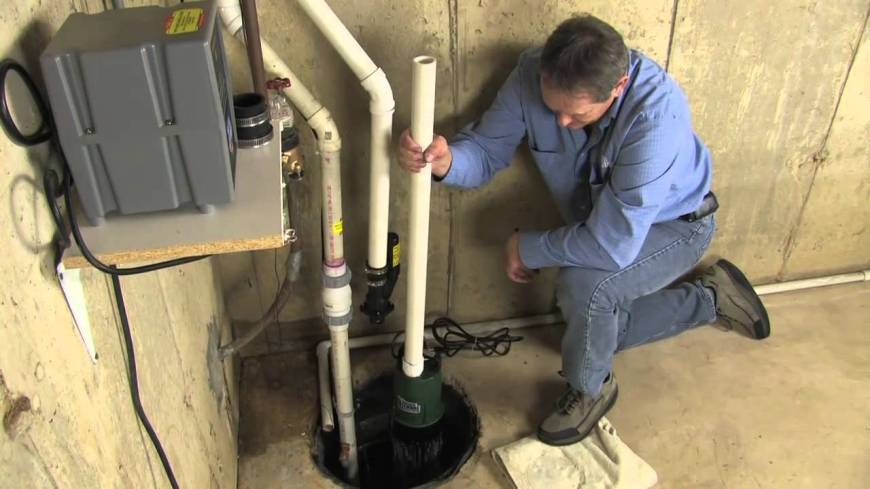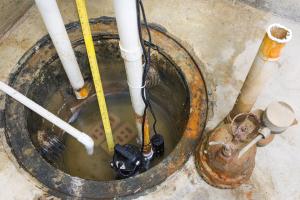Straightforward Methods to Service a Sump Pump
Straightforward Methods to Service a Sump Pump
Blog Article
We have encountered this great article about Cleaning & Maintenance Tips for Your Home's Sump Pump listed below on the web and accepted it made sense to discuss it with you on this site.

Sump pumps are important components in many homes, particularly in areas prone to flooding or too much wetness. They assist avoid water damages by efficiently eliminating excess water from basements or crawl spaces. Nonetheless, like any other home appliance, sump pumps require routine maintenance to guarantee they function properly when needed the most. Cleaning your sump pump is an important part of its upkeep, and comprehending just how to do it appropriately can conserve you from pricey repair work and possible calamities.
Intro
Keeping a tidy sump pump is vital for its proper performance and long life. Disregarding this vital task can result in clogs, breakdowns, and eventually, water damages to your residential property. Consequently, discovering how to clean up a sump pump is vital for house owners that rely upon these devices to maintain their cellars completely dry and secured.
Signs of a Dirty Sump Pump
Knowing when your sump pump needs cleaning is essential for avoiding potential breakdowns. Some common indications that indicate an unclean sump pump include odd noises during procedure, lowered water circulation, and visible debris in the pit. If you notice any one of these signs, it's essential to cleanse your sump pump immediately to avoid any additional issues.
Planning for Cleaning
Prior to you start cleaning your sump pump, it's vital to take some safety preventative measures. Start by turning off the power to the pump to prevent any kind of electric crashes. Additionally, wear appropriate safety gear, such as handwear covers and safety glasses, to safeguard yourself from dirt, particles, and prospective microorganisms.
Recognizing the Sump Pump
Prior to diving right into the cleansing process, it's essential to have a standard understanding of how a sump pump functions. Usually installed in a pit or container listed below the basement floor, a sump pump contains numerous essential elements, consisting of a pump, a float switch, and a discharge pipe. When water accumulates in the pit, the float switch turns on the pump, which then pumps the water out through the discharge pipeline, far from the building's structure.
Step-by-step Overview to Cleaning Up a Sump Pump
Shutting Off the Power
Begin by separating the power supply to the sump pump to avoid any type of accidents while cleaning.
Looking For Correct Functioning
Prior to re-installing the pump, carry out a quick examination to make certain that the float switch triggers the pump properly. Put some water right into the sump pit and observe the pump's operation. If every little thing is functioning correctly, you can rebuild the pump and reconnect the power supply.
Eliminating Debris and Dust
Make use of a pail or an inside story to get rid of any noticeable particles, dust, or sediment from the sump pit. Dispose of the debris correctly to prevent it from obstructing the pump or the discharge pipeline.
Cleansing the Pump and Float Switch
Once the pit is clear of particles, meticulously get rid of the pump from the pit. Evaluate the pump and the float switch for any kind of indications of damage or wear. Utilize a soft brush or cloth to cleanse the surface areas and get rid of any gathered gunk.
Flushing the System
After cleaning the pump and float button, purge the sump pit with tidy water to get rid of any type of remaining dirt or sediment. This will certainly help ensure that the pump runs efficiently and successfully.
Upkeep Tips to Maintain Your Sump Pump Clean
In addition to regular cleansing, there are several upkeep ideas you can comply with to maintain your sump pump in optimal condition:
Conclusion
Cleaning your sump pump is a crucial element of its upkeep and guarantees that it operates efficiently when you need it one of the most. By complying with the actions outlined in this guide and incorporating routine maintenance right into your regimen, you can extend the life-span of your sump pump and shield your home from water damage.
6 STEPS ON HOW TO CLEAN A SUMP PUMP PROPERLY
UNDERSTANDING SUMP PUMPS
Your sump pump plays a crucial role in protecting your home by managing and removing excess water. It primarily functions as a “shield”, guarding your basement against the damaging effects of water accumulation. The pump is housed in a sump pit in the lowest part of your basement, and its job is to pump out any water that collects there.
During heavy rainfalls or when snow melts rapidly, water can infiltrate your basement, posing potential risks like flooding, structural damage, and harmful mold growth. Here, the sump pump springs into action, pumping out the intruding water and directing it away from your home.
SAFETY FIRST
Before cleaning, remember to prioritize safety. Disconnect the sump pump from the power source to prevent any accidental electric shocks. Also, wear sturdy gloves to protect your hands from any sharp or dirty components within the pump.
REMOVE THE SUMP PUMP
After ensuring your safety, the next step is to remove the sump pump from its pit. Doing this might require careful maneuvering as you don’t want to damage any pump components. Once removed, clean the sump pit to remove any accumulated debris or sludge.
INSPECT THE PUMP
Inspect the pump for any visible signs of wear or damage. Check the power cord, float switch, and impeller housing. If any components look worn out or damaged, consider replacing them to ensure optimal performance.
CLEAN THE PUMP
Thoroughly clean the pump with warm, soapy water. Make sure to rid it of any dirt, gravel, or other debris that might impede its performance. You can use a toothbrush to clean the small, hard-to-reach parts of the pump.
REINSTALL THE SUMP PUMP
Reinstall the pump into the sump pit Make sure it’s positioned correctly to remove the water effectively Once it’s back in place, reconnect it to the power source TEST THE PUMP
Finally, pour some water into the pit to ensure the pump works correctly. It should start automatically and begin pumping out the water; if it doesn’t, check the power source and the positioning of the pump.
Remember, while cleaning your sump pump is an essential part of home maintenance, hiring a professional plumber for a thorough inspection and cleaning at least once a year is also important. This will ensure that your pump is in optimal condition, ready to protect your home from potential water damage.
BEST PRACTICES FOR CLEANING SUMP PUMP DISCHARGE PIPES
Regular Inspection: Regularly inspect your discharge pipes, especially during heavy rainfall or snowmelt periods. Look for any signs of blockage or damage. Early detection of problems can prevent serious issues down the line. Periodic Cleaning: Over time, sediment and debris can accumulate in the discharge pipes, impeding the flow of water. Regular cleaning helps keep the pipes clear and functioning efficiently. You can use a high-pressure water jet to effectively clean the pipes. Insulation During Winter: In colder climates, discharge pipes can freeze, blocking the outflow of water. Protect your discharge pipes from freezing temperatures by insulating them with foam pipe insulation. This will ensure the sump pump can continue to discharge water even in freezing conditions. Proper Positioning: The discharge pipe should be positioned to direct water away from your home’s foundation. Improper positioning can lead to water seeping back into the basement. Ensure the pipe is long enough and angled correctly. Installation of a Check Valve: A check valve prevents water from flowing back into your sump pit after the pump has pushed it out. Installing a check valve helps maintain the efficiency of your sump pump and reduces the risk of flooding. Minimize Pipe Turns: Every curve or turn in the discharge pipe can decrease the efficiency of water flow. By minimizing turns and bends in your discharge pipe, you can increase the efficiency of your sump pump. https://www.fullspeedplumbing.com/how-to-clean-a-sump-pump-properly9999/

As an avid person who reads on Keep Your Sump Pump Clean, It'll Keep You Dry, I was thinking sharing that topic was a good thing. Feel free to pause to promote this blog if you enjoyed it. Kudos for your time. Return soon.
Estimate Free Report this page